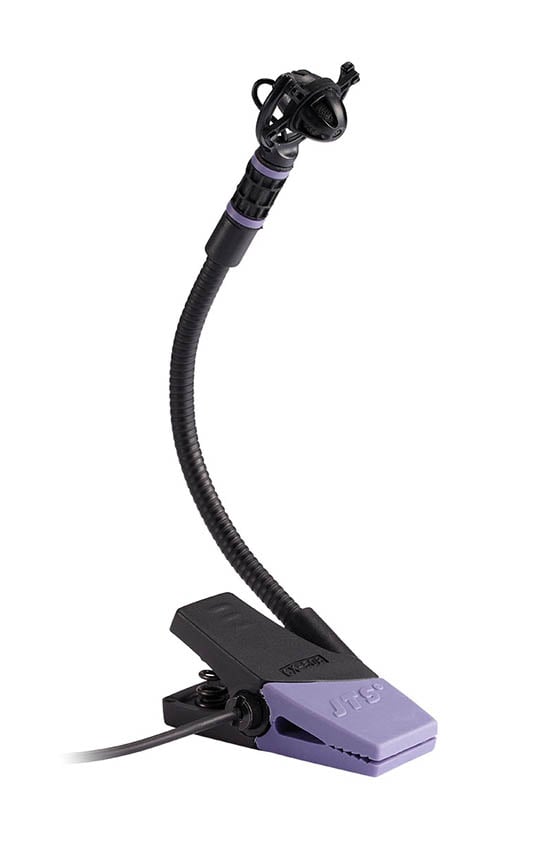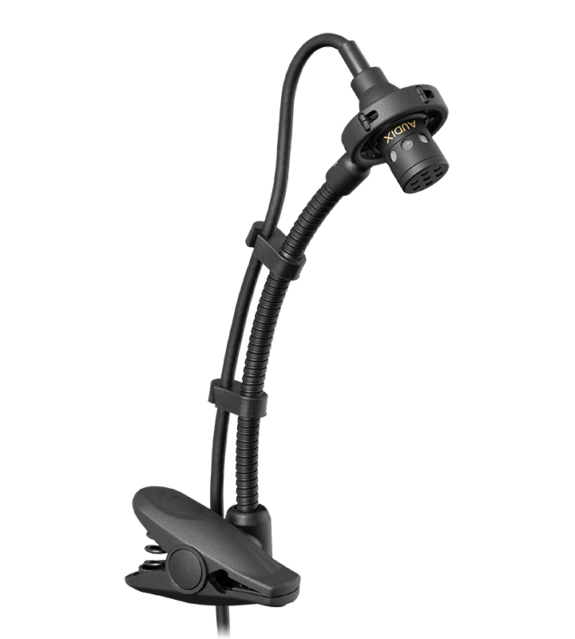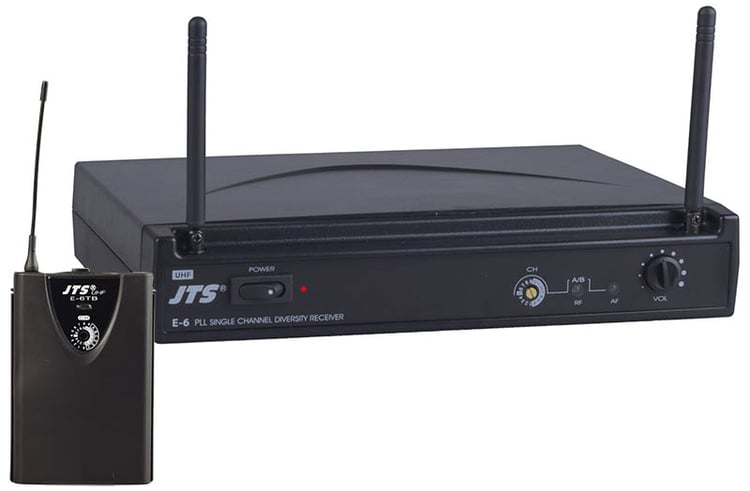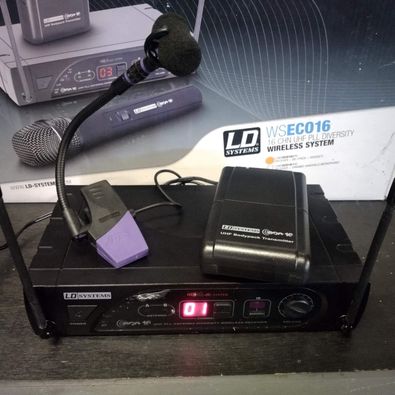
Clip On Wireless Instrument Microphones.
Are you a saxophone player (or indeed saxophonist) fed up with being stuck in front of an SM57 on a mic stand? Are you a trumpeter wanting to spread your wings and be lofted into the upper reaches of an auditorium whilst playing flight of the bumblebee. Or maybe you're a flautist desperate to release your inner Ian Anderson and flaunt your cod-piece to the entire audience front row?
Well.....why not? It's not just singers and guitarists that want the freedom offered by wireless microphone systems, brass and woodwind players need to be released!
I've supplied hundreds of 'clip on' instrument systems to brass and woodwind players over the years. I kinda fell into it. Not that many suppliers seemed to be specialising in them, and so I began carrying more and more products and a wider range. Over the years I've developed a knowledge of which ones work and which ones are not so good, what's reliable and what isn't and sometime pairing up different mics with different wireless systems.
However, the whole subject might seem a little daunting with lots of products and combinations available so I thought I'd distill the information into a blog post.
How Do Clip On Wireless Microphones Work.
Well, the idea is that you take a small (usually a condenser) microphone and attach it to a short 'gooseneck' with some sort of strong clip at the bottom to attach it to the instrument. The most popular type is the sax/trumpet type which attaches to the bell of the instrument (see the image of the JTS CX508 below), but there are others which are a bit different, such as flute systems.
The mic is then plugged into a 'bodypack' transmitter, usually a little smaller than a cigarette packet that you attach about your person. This then transmits the audio signal to a receiver which is then plugged into the sound system.
Note: There were some systems developed which incorporated the transmitter into the same assembly as the microphone which is a great idea because then you have no wire going to the bodypack transmitter, so really wireless. Samson had one as part of their Airline range, but this is no longer available, but JTS have one in their range.....more later.
 The Microphones.....
The Microphones.....
The two main elements of wireless instrument systems are the microphones themselves and then the wireless system you plug it into.....I'll start with the mics.
I generally offer one of two microphone options. One is a tried and tested, excellent value for money option, one is more in the 'pro' league and a little more expensive.
JTS CX508 Clip On Microphone.
I like JTS microphone products. They offer excellent value and performance and well thought out and very usable.
The CX508 offers a great sounding miniature condenser microphone capsule.
One really important feature of the latest version of this mic is that the capsule is mounted in a miniature elastic suspension which minimises stage noise and 'rumble' and also key noise from the instrument.
I offer this microphone as a brand new option with a range of bodypack wireless systems, and I can also offer it with a range of connector options for use with most bodypacks if you already have a wireless system you would like to use. Sennheiser and Trantec (locking jack), LD Systems and Electrovoice (3 pin mini XLR), and JTS (4 pin mini XLR).
 The second microphone I'm able to offer to clients is the Audix ADX20iP. Good though the JTS option is, the ADX20iP offers an additional level of clarity and presence. I've used these extensively and they really do sound great. You can speak into each microphone option and hear the difference.
The second microphone I'm able to offer to clients is the Audix ADX20iP. Good though the JTS option is, the ADX20iP offers an additional level of clarity and presence. I've used these extensively and they really do sound great. You can speak into each microphone option and hear the difference.
As you can see the design approach is very similar for both mics, with the Audix also offering a miniature suspension which really helps.
This microphone is made in the U.S.A., and, like the JTS CX508, I can offer it with the same range of connector options for use with most bodypack wireless systems.
Bodypack Wireless Systems......
So the next part is to select a wireless bodypack system into which you can plug one of these excellent quality clip on microphones.

Both these great quality microphones can be adapted for use with most bodypack wireless microphone systems. I generally have a selection of new and used systems available.
In terms of new wireless bodypack systems, I can supply the excellent quality JTS products. The JTS E6 represents the 'entry level' product which offer 16 UHF channels within the UK license free frequency spectrum. Channel 70 (863 - 865mhz).

I can partner the JTS CX508 or Audix ADX20iP with a range of excellent quality used items.
In addition to new JTS products, I usually have Trantec S4.4 systems readily available. This bodypack system is ideal to partner with either microphone. This systems offers 4 frequencies which are selected via a simple micro switch. Just match the frequency of the transmitter and receiver and away you go! No menus, no autotune, etc.
The receiver is a solidly built compact metal box.
Other wireless systems that offer excellent value and performance within the used market also include Electrovoice RE Series products (RE2, R300 systems) which offer menus and auto-tuning facilities, detachable aerials, rackmounting options, as well as high quality transport cases/bags.

I usually have a selection of used products from LD Systems. From the entry level ECO16 systems as well as the later U308 products. Either of these product ranges are excellent partners for either of the two clip on microphones.
Finally, I usually have some used JTS wireless products including the excellent PU901 and US1000 products.
For all the current new and used clip on instrument wireless systems, check out my dedicated Payhip store/channel page.....
https://payhip.com/SimonThompsonMusic/collection/instrument-wireless-microphones
Feel free to contact me with any questions or help with clip on wireless microphone systems.
